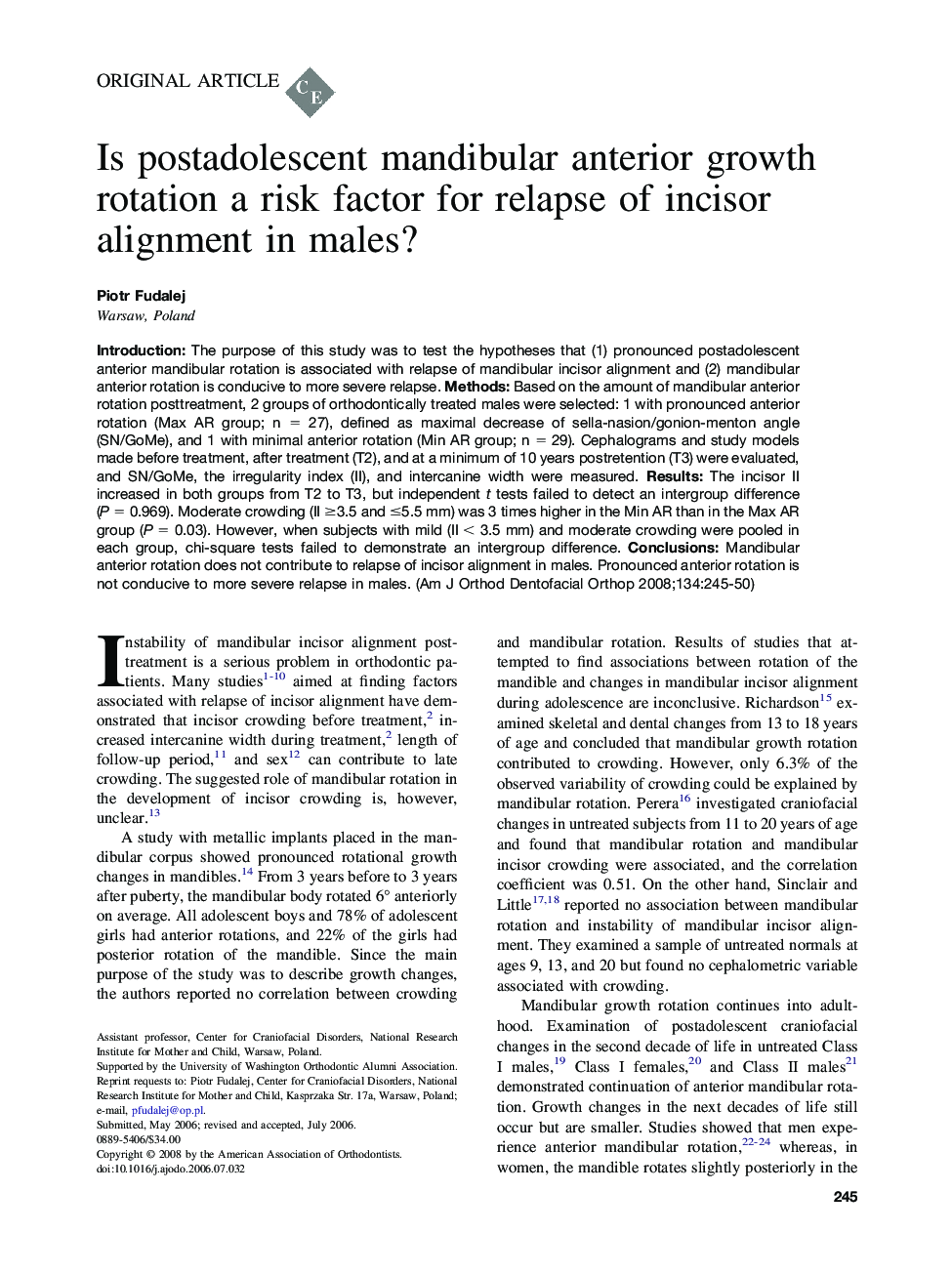| Article ID | Journal | Published Year | Pages | File Type |
|---|---|---|---|---|
| 3118533 | American Journal of Orthodontics and Dentofacial Orthopedics | 2008 | 6 Pages |
Introduction: The purpose of this study was to test the hypotheses that (1) pronounced postadolescent anterior mandibular rotation is associated with relapse of mandibular incisor alignment and (2) mandibular anterior rotation is conducive to more severe relapse. Methods: Based on the amount of mandibular anterior rotation posttreatment, 2 groups of orthodontically treated males were selected: 1 with pronounced anterior rotation (Max AR group; n = 27), defined as maximal decrease of sella-nasion/gonion-menton angle (SN/GoMe), and 1 with minimal anterior rotation (Min AR group; n = 29). Cephalograms and study models made before treatment, after treatment (T2), and at a minimum of 10 years postretention (T3) were evaluated, and SN/GoMe, the irregularity index (II), and intercanine width were measured. Results: The incisor II increased in both groups from T2 to T3, but independent t tests failed to detect an intergroup difference (P = 0.969). Moderate crowding (II ≥3.5 and ≤5.5 mm) was 3 times higher in the Min AR than in the Max AR group (P = 0.03). However, when subjects with mild (II < 3.5 mm) and moderate crowding were pooled in each group, chi-square tests failed to demonstrate an intergroup difference. Conclusions: Mandibular anterior rotation does not contribute to relapse of incisor alignment in males. Pronounced anterior rotation is not conducive to more severe relapse in males.
